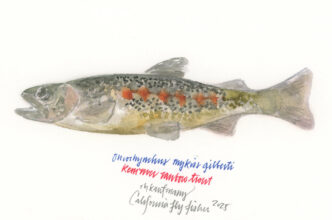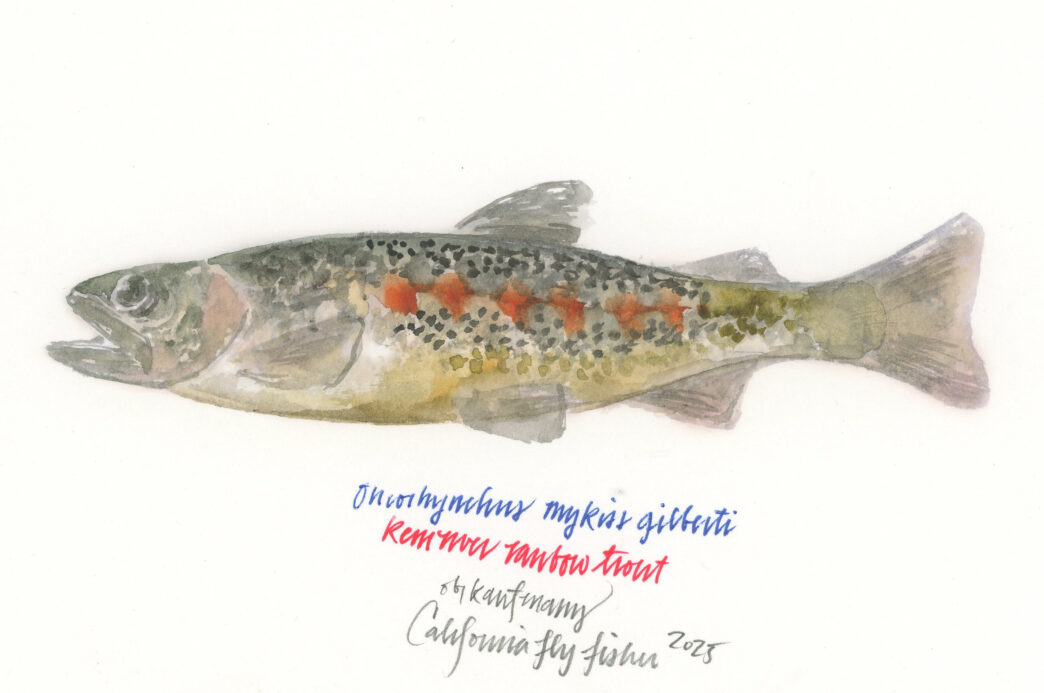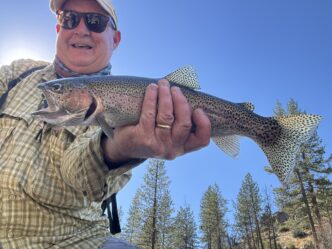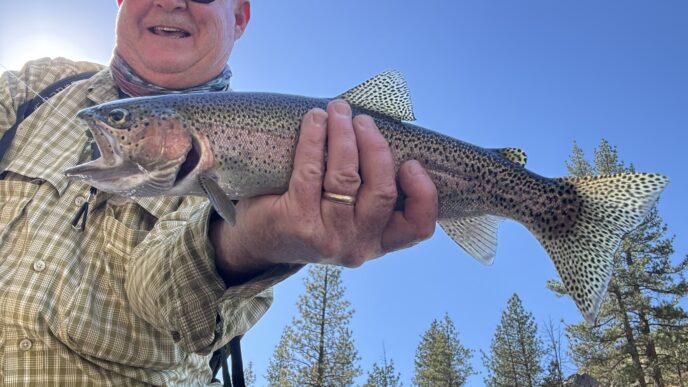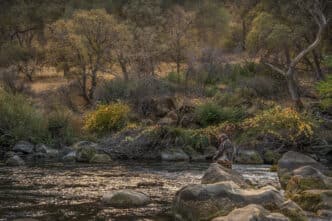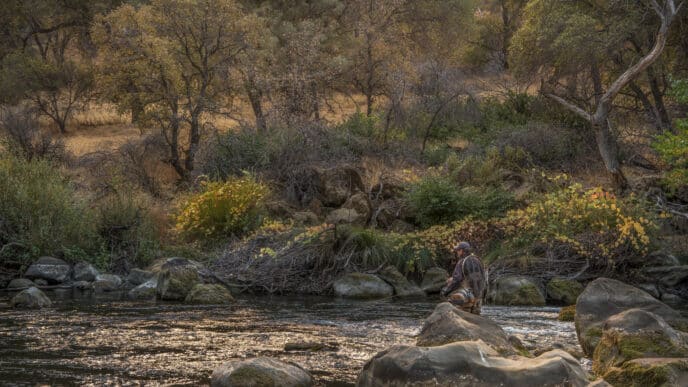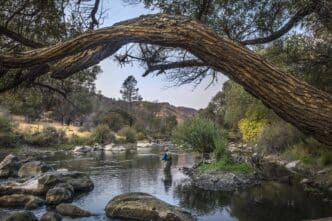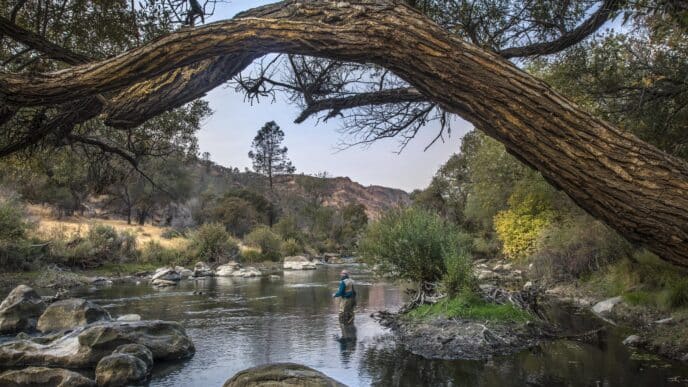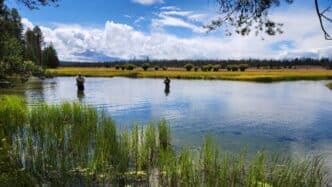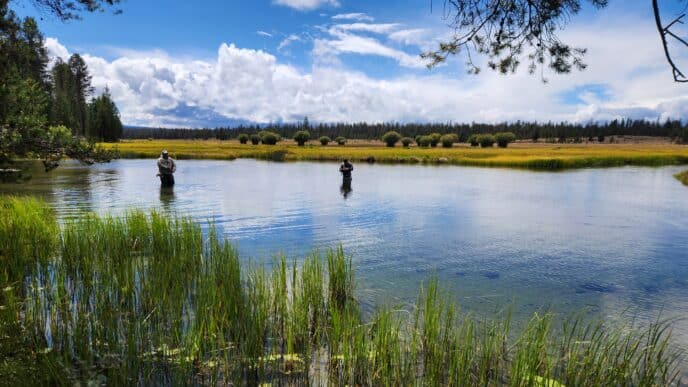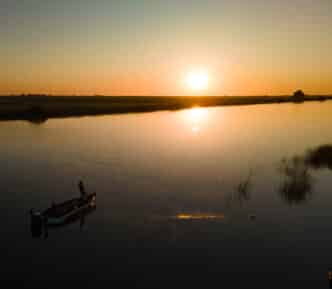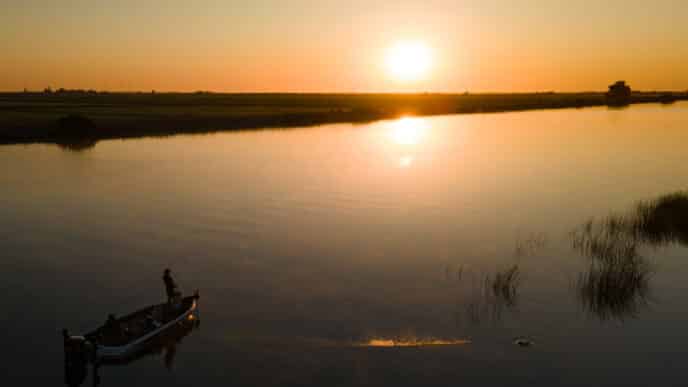GEOLOGY
By Jeff Ludlow
Illustrations by Obi Kaufmann
There’s the South San Joaquin
Where the seeds of the dust bowl are found
And there’s a place called Mount Whitney
From where the mighty Kern River comes down
Well, it’s not deep or wide
But it’s a mean piece of water, my friend
And I may cross on the highway
But I’ll never swim the Kern River again
The lyrics of the great Merle Haggard strum a haunting note for the Kern River as one of California’s most treacherous rivers. With its headwaters high on the flanks of Mount Whitney and its terminus in the bottom of the San Joaquin, the argument could be made that the Kern has one of the steepest river gradients in North America. What results is a freestone upper river canyon fed by snowmelt from the highest peaks of the Sierra Nevada. True to the words of the country crooner, the river was named by John Fremont in honor of Edward Kern, Fremont’s topographer, who nearly drowned in the turbulent waters of the river in 1845, while mapping its course.
The Kern River flows from north to south, unique among the rivers on the west slope of the Sierra Nevada. This anomalous flow direction is entirely controlled by the Kern Canyon Fault (KCF), a strike-slip fault where rocks on the east side of the fault were displaced laterally south, relative to the rocks on the west side of the fault. Geologic studies suggest that the KCF once reached as far south as the Tehachapi Mountains, where the KCF joined the Garlock Fault, another major strike-slip fault that in turn is connected to the San Andreas Fault. Together, movement along these major fault systems gave rise to the western tail of the Southern Sierra Nevada range seen today.
Three very important endemic trout species are found in the Kern River watershed: the California golden trout, the Little Kern River golden trout and Kern River rainbow trout. These fish all share a common ancestor, the coastal rainbow trout, which gained access to the Kern River watershed during the Ice Age, when glacial run-off flooded barriers, allowing fish to migrate into the high Sierra. Over the millennia, as the glacial runoff receded and exposed fish migration barriers, the coastal rainbow trout were isolated in the Kern River system, and the processes of insular or island biogeography took hold. Species-ecosystem relationships developed, and isolated natural communities were created for the Kern River to allow its endemic species to evolve separately, without influence from the coastal rainbow trout. Not unlike the concepts of Darwin’s finches, the evolutionary biology of the Kern River trout species is greatly influenced by geographic and geologic variables.
For our state fish, the California golden trout, the forces of geology created the ideal habitat for this fish to evolve. Golden Trout Creek was once a tributary of the South Fork of the Kern River. However, approximately 176,000 years ago, basalt flows from three volcanic cones changed the course of Golden Trout Creek forever. The creek that once flowed south and east to the South Fork of the Kern was rerouted west by the lava flows towards and over the canyon walls of the North Fork Kern River. This created Volcano Falls, a barrier to fish migration from the North Fork. As a result, a new ecosystem was created isolated from the North and South forks of the Kern River, and its trout, providing a habitat for the California golden trout to evolve into the beloved species known today.
- Moore, James, et al, 1985. Geologic Map of the Kern Peak Quadrangle, Tulare County, California. U.S. Geological Survey.
- California Trout, et al, 2017. SOS II: Fish In Hot Water. Status, threats and solutions for California salmon, steelhead and trout.
- Schalla, Steve, 2024. Fly Fishing the Sierra – Origins of the Golden Trout. https://flyfishingthesierra.com/origins-of-the-golden-trout/
- Nadin, E.S., et al, 2008. Disruption of regional primary structure of the Sierra Nevada batholith by the Kern Canyon fault system, California, Geological Society of America Special Paper 438, January.
- Brossy, C.C. et al, 2012. Map of the late Quaternary active Kern Canyon and Breckenridge faults, southern Sierra Nevada, California. Geosphere , June 1.
AMPHIBIANS – KERN PLATEAU SALAMANDER
The salamander that breathes through its skin
By Sabra Purdy, Aquatic Ecologist
Spring in the Sierra Nevada brings swollen creeks from snowmelt, a symphony of new growth, and the melody of bird song. If you happen to be near fast-moving, clean water in the higher elevations, you may hear the distinctive trill and chatter of the American Dipper (Cinclus mexicanus). This fascinating bird is a true mountain dweller, thriving in turbulent rivers and streams.
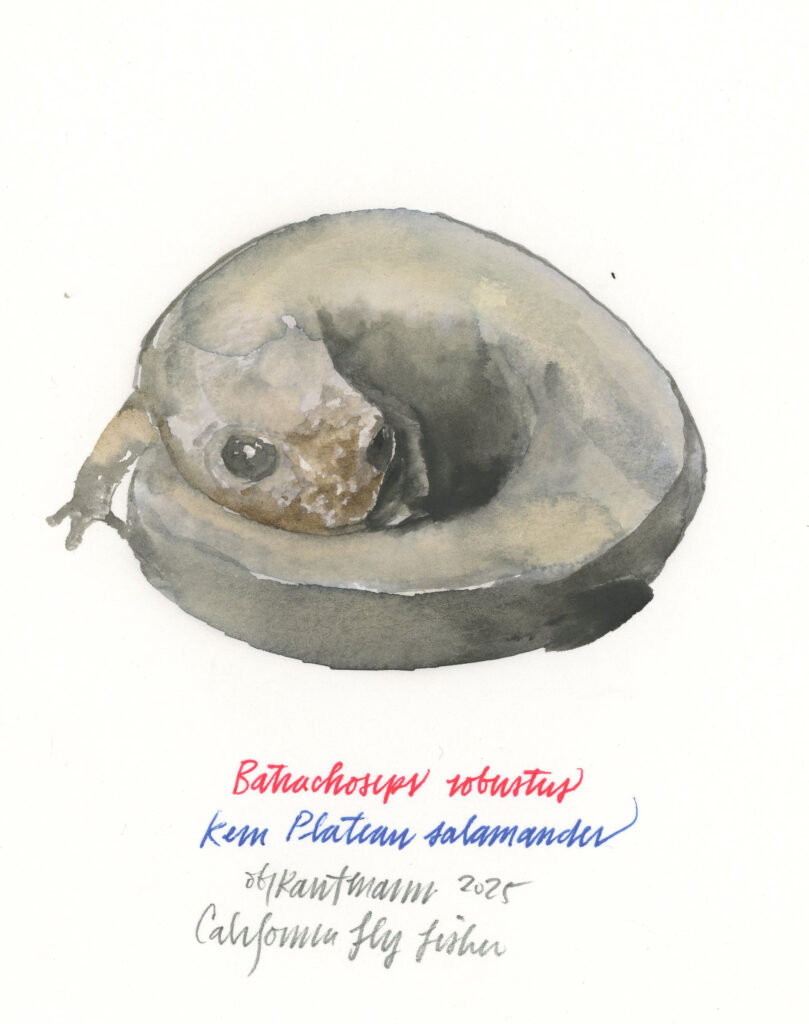
At first glance, the American Dipper’s gray plumage may appear unremarkable, but a closer look reveals its striking white eyelids that become visible with each blink. While it may not immediately stand out for its coloration, the American Dipper is far from dull. It exhibits extraordinary behaviors that set it apart from other songbirds. Remarkably, it is the only songbird known to plunge into and completely submerge itself in rushing waterfalls, rivers, and streams. Beneath the water’s surface, the Dipper flips over small rocks and pebbles in search of macroinvertebrates, mainly benthic nymphs and larvae. This stunning feat of diving and submersion is just one of its many talents.
The American Dipper can also capture flying insects mid-air, adding to its already impressive skills. With its body bobbing rhythmically as it walks along riverbanks, the Dipper remains unfazed by the tumultuous waters, making it a beloved sight for river enthusiasts and fishermen alike. Whether seen or only heard, the American Dipper’s unique antics make it a welcome addition to mountain rivers throughout the West.

About Obi
Illustrator Obi Kaufmann is an award-winning author of many best-selling books on California’s ecology, biodiversity, and geography. His 2017 book The California Field Atlas, currently in its seventh printing, recontextualized popular ideas about California’s more-than-human world. His next books, The State of Water; Understanding California’s Most Precious Resource, and the California Lands Trilogy: The Forests of California, The Coasts of California, and The Deserts of California present a comprehensive survey of California’s physiography and its biogeography in terms of its evolutionary past and its unfolding future. The last in the series, The State of Fire; Why California Burns was released in September 2024.



